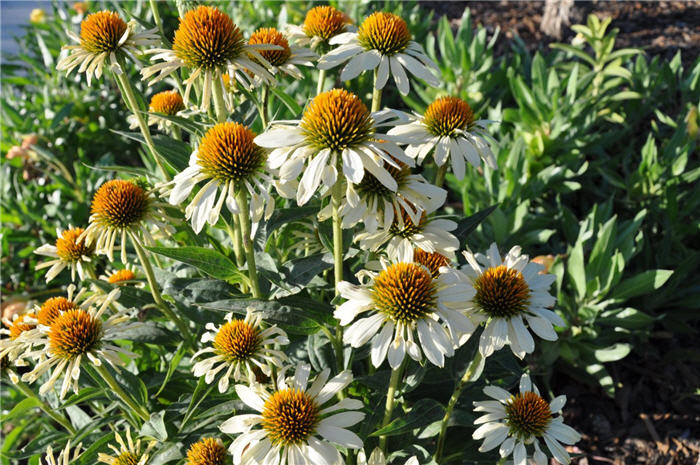| Botanical Name: Echinacea 'Sunrise' | |
| Common Name: Sunrise Coneflower |

-
Anatomy
-
Culture
-
Design
Plant Type
Perennial, Wildflower
Height Range
1-3'
Flower Color
Yellow
Flower Season
Summer, Fall
Leaf Color
Dark Green
Bark Color
n/a
Fruit Color
n/a
Fruit Season
n/a
Sun
Full
Water
Medium
Growth Rate
Fast, Moderate
Soil Type
Sandy, Clay, Loam, Rocky, Unparticular
Soil Condition
Average, Rich, Poor, Well-drained, Dry
Soil pH
Neutral, Basic
Adverse Factors
n/a
Design Styles
English Cottage, Meadow, Ranch, Spanish, Native Garden
Accenting Features
Showy Flowers
Seasonal Interest
Summer, Fall
Location Uses
Perennial Border, Parking Strip
Special Uses
Cut Flowers, Naturalizing
Attracts Wildlife
Birds, Butterflies
Information by: Stephanie Duer
Photographer:
Photographer:
-
Description
-
Notes
Sunrise coneflower is one of the Big Skyâ„¢series of coneflowers. Flowers are pale yellow and fragrant. Blooms mid summer to early fall. Plants are somewhat rigid and upright, with large green leaves. Grows 1 to 3 feet tall and wide. Attracts birds and butterflies. Deer resistant.
Grow in deep, well-drained soil in full sun to part shade. Tolerates heat, humidity, and poor soils. Marketed as being drought tolerant, though usually in our hot, dry summers, purple coneflowers do best with some supplemental water. Cut back stems to promote more flowering and reduce excessive self-seeding. Deadheading prolongs flowering, however, leaving some flowers on the plant over winter will provide seeds for songbirds.